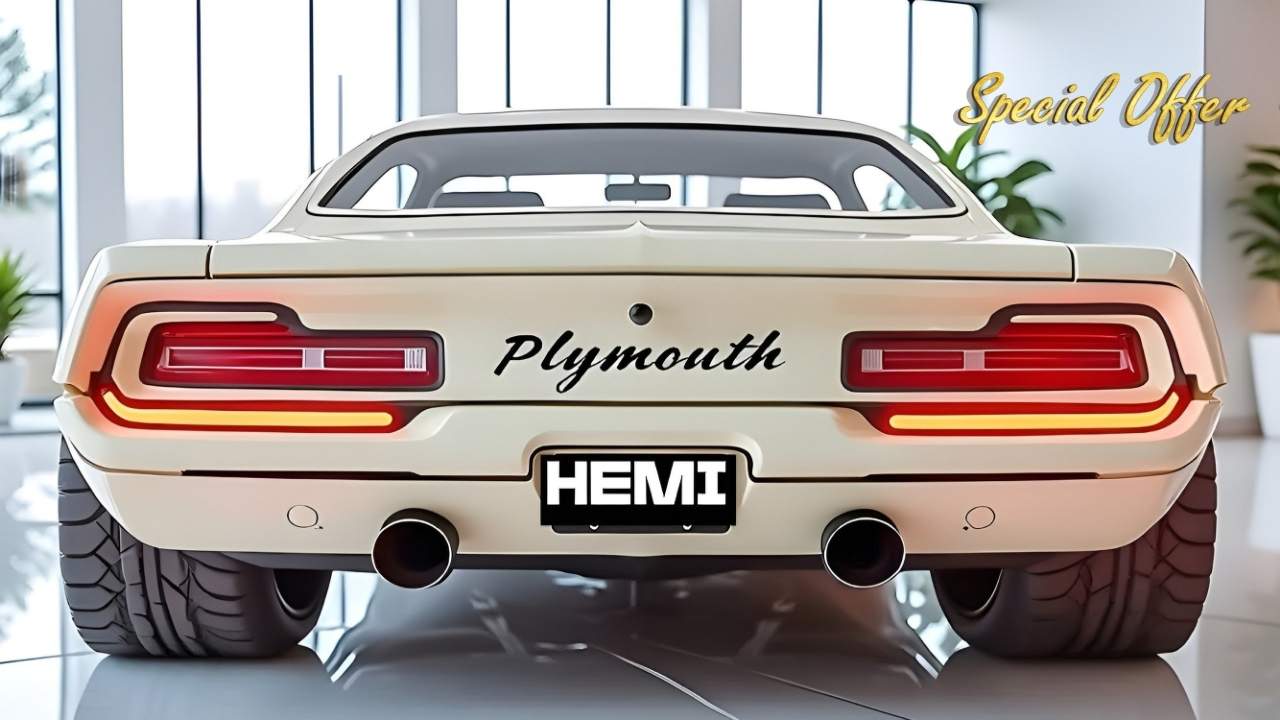Join on WhatsApp
Get the latest updates directly on WhatsApp – motivation, news & more!
When you think of muscle cars, the Plymouth HEMI Cuda probably comes to mind. This legendary beast isn’t just a car; it’s a symbol of the golden age of American muscle cars. Known for its raw power, aggressive design, and unmistakable roar, the HEMI Cuda is one of those vehicles that still manages to turn heads, even decades after it first hit the road. Whether you’re a car enthusiast or just someone who appreciates iconic design, the Plymouth HEMI Cuda has earned its place in automotive history. Let’s dive into what makes this car so legendary.
What Is the Plymouth HEMI Cuda and Why It Matters
The Plymouth HEMI Cuda is a high-performance muscle car produced by Plymouth in the late 1960s and early 1970s. It was part of the “Plymouth Barracuda” line but took a turn toward serious performance with the introduction of the HEMI engine, a 426 cubic-inch V8 that became legendary for its power.
The name “HEMI” comes from the engine’s hemispherical combustion chamber design, which allows for more air and fuel to be packed into the engine, resulting in more power. The HEMI Cuda, with its aggressive styling and powerful engine, became a symbol of American muscle and performance. It’s not just about the specs; it’s about the history and the emotion behind every rev of the engine.
When Did the Plymouth HEMI Cuda First Hit the Streets?
The Plymouth HEMI Cuda was first introduced in 1970, as part of Plymouth’s second-generation Barracuda lineup. It was a response to the growing demand for high-performance muscle cars in the market. With its iconic wide stance, dual-scooped hood, and aggressive rear end, the HEMI Cuda immediately caught attention on the streets and at the racetrack.
In fact, the 1970 model is considered the most iconic, offering buyers the choice of the 426 HEMI engine. However, it wasn’t just about brute force; Plymouth made sure the car was finely tuned for handling as well, ensuring it wasn’t just fast in a straight line but also able to carve through corners.
How the Plymouth HEMI Cuda Works – Explained Simply
The Plymouth HEMI Cuda’s magic lies in its combination of raw engine power and sleek design. Here’s a breakdown of how it all comes together:
- HEMI Engine: At the heart of the Cuda was the 426 cubic-inch HEMI V8 engine, producing a staggering 425 horsepower. This engine was capable of hitting 60 mph in just over 5 seconds a remarkable feat at the time. The engine’s performance was complemented by a four-speed manual transmission, which allowed drivers to fully engage with the car’s power.
- Muscular Design: The HEMI Cuda wasn’t just about power; it had the looks to match. It featured a wide body with aggressive lines, including the signature shaker hood scoop that added to its muscle-car persona. The rear end was wide, with a fastback roofline that gave it a fierce look from every angle.
- Suspension and Handling: Despite its raw power, the HEMI Cuda was surprisingly adept at handling. The heavy-duty suspension and front and rear sway bars made it capable of keeping control during high-speed turns, making it more than just a straight-line performer.
Common Mistakes With the Plymouth HEMI Cuda and How to Avoid Them
Owning a classic car like the Plymouth HEMI Cuda requires some special care and attention. Here are a few common mistakes that owners should avoid:
- Neglecting the engine: While the HEMI engine is a powerhouse, it needs regular maintenance to keep running smoothly. Overlooking routine checks, like oil changes or cooling system flushes, can lead to expensive repairs. Make sure to maintain the engine and the HEMI heads, which require a bit more attention compared to regular engines.
- Ignoring rust: Like many classic cars, the Cuda is prone to rust, especially around the quarter panels and frame rails. Always check for rust spots before purchasing one and ensure proper storage to prevent future damage.
- Modifying too much: While it’s tempting to modify a classic muscle car, over-customizing can affect the car’s originality and value. Keep it as close to the original specs as possible if you’re looking to preserve its historical value. If you want to make some updates, be sure they’re reversible.
Best Tips to Make the Most of the Plymouth HEMI Cuda
To get the most out of your HEMI Cuda, consider these tips:
- Preserve its originality: The more original your HEMI Cuda is, the more valuable it becomes. Keep track of all the original parts and consider restoring rather than modifying if you want to maintain its classic charm.
- Invest in quality restoration: If you’re restoring a HEMI Cuda, make sure to use high-quality parts and experts who understand the specifics of the vehicle. Proper restoration can keep your Cuda running smoothly and preserve its value for years.
- Join the community: There’s a huge network of Plymouth enthusiasts and collectors. Joining forums or attending muscle car events can help you learn more about the car, find parts, and connect with other owners.
The Latest Updates on the Plymouth HEMI Cuda
While Plymouth no longer manufactures the HEMI Cuda, the car’s legacy lives on in the collector’s market. Recently, there has been a renewed interest in classic muscle cars, with several enthusiasts restoring or even reimagining the Cuda with modern performance parts. Additionally, some manufacturers have brought back versions of muscle cars inspired by the HEMI Cuda, keeping the spirit alive for new generations of car lovers.
In recent years, the auction market for classic muscle cars, especially original 1970 HEMI Cudas, has seen an uptick in prices. Some rare models have been known to fetch over $1 million at auctions, making them not just a car but an investment piece for collectors.
Conclusion: Why the Plymouth HEMI Cuda is Still a Head-Turner
The Plymouth HEMI Cuda is more than just a car it’s a piece of American automotive history. Its combination of blistering performance, aggressive styling, and a legendary engine makes it a standout in the muscle car world, even decades after its production ended. Whether you’re a collector or a fan of high-performance vehicles, the HEMI Cuda is a car that still demands attention, and rightly so.
If you get the chance to own one, or even just see one in person, it’s a reminder of what makes muscle cars so special: raw power, timeless design, and an unmistakable roar.
FAQ
When was the Plymouth HEMI Cuda first introduced?
The Plymouth HEMI Cuda was first introduced in 1970 as part of the second-generation Plymouth Barracuda lineup, marking the beginning of its iconic status.
What makes the Plymouth HEMI Cuda so special?
The HEMI Cuda is famous for its 426 HEMI V8 engine, producing 425 horsepower, paired with its aggressive design and ability to dominate both on the streets and the racetrack.
How much did a Plymouth HEMI Cuda cost when it was first released?
When the HEMI Cuda was first released in 1970, it had a starting price of around $4,000, which was quite expensive at the time for a muscle car.
Can I still find a Plymouth HEMI Cuda today?
Yes, the Plymouth HEMI Cuda is still available on the collector’s market, though original models can be hard to find and expensive due to their historical significance.
Why is the Plymouth HEMI Cuda considered a collector’s car?
The Plymouth HEMI Cuda is a collector’s car due to its rarity, iconic design, and the powerful HEMI engine, which made it one of the most sought-after muscle cars of its time.



